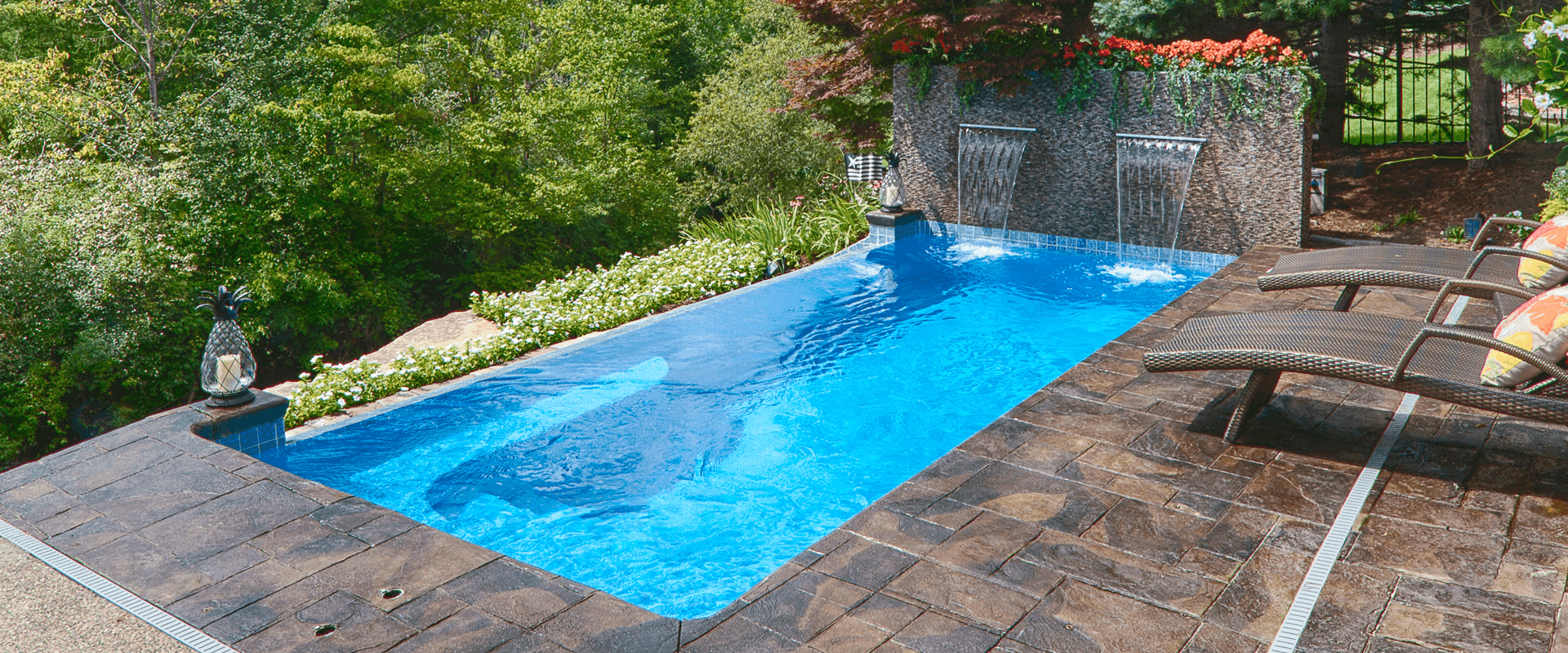877-929-7665
Ask the General: Can Decorative Concrete Inlays Improve the Look and Feel of our Inground Pool?
Dear General,
Our fiberglass pool looks great, but we’re starting to see some significant wear and tear to the surrounding concrete. Frankly, we’re envious of all the new pool designs available on the market today, and we want to up the wow factor of our backyard. After some initial research, decorative concrete inlays look like a viable solution. What do you recommend?
Sincerely,
Soaking in Savannah

Dear Savannah,
Thanks for helping me understand where you’re coming from. Many pool owners find themselves in your situation as time passes, and most, like you, take pride in keeping their backyard fresh and updated.
An aging concrete patio and pool surround can really take away from the elegant look and feel of your backyard and simply make it less inviting. In the past, I’ve seen pool owners attempt to cover up aging concrete a couple of ways.
- The old patch, fill, pressure wash, and paint it method. Some pool owners resort to patching holes, filling cracks, pressure washing stains, and then using deck paint to make it look a bit more fresh. It looks great about half of the season, then you realize it’s going to need to be repainted every year.
- The hide it, nobody goes over there anyway method. Other pool owners attempt to fix up the area on the side of the house where everyone spends most of their time, hoping they won’t see the ugly concrete in another. Or perhaps, they cover it with indoor/outdoor carpet. When that wears out, they might even try to build a deck over it.
Decorative Concrete Inlays are a more permanent solution to repair the old concrete deck surrounding your fiberglass pool.
Decorative concrete inlays are made of a polymer-modified cement that is applied over the existing concrete deck. My deck was probably ten years old and really showing age when I had it overlaid. I hired professionals to do the work, and they came in and patched the bad places, filled the cracks, and ground down some rough edges. The process only took a few days from start to finish. It looked fantastic, and 20 years later, it still does. You will need to reseal it every five years, but all that involves is a bucket of their sealer, a paint roller, and forced labor of one of your kids or grandkids. It is amazingly easy to rejuvenate the whole area by doing this simple task.
Speaking of cracks, I must admit that some of the original breaks returned because the concrete under the coating had structural cracks. Fortunately, they were on the far side of the pool and not very noticeable. One thing that I have noticed is that the coating is slicker and smoother than regular concrete, especially when wet. So, no running around the pool. There are anti-slip materials that can be incorporated if desired. The best thing is that it’s a great way to get your pool deck back in shape and make you less envious of all those new pool designs you mentioned.
To help you with your decision, here are some answers to frequently asked questions I have received on this subject:
How long is the lifespan of decorative concrete inlays?
If maintained and resealed properly, it will last 20 years and beyond.
How thick are decorative concrete inlays?
It is applied approximately 1/8 inch thick. However, some applications may be thicker depending on the design, and whether the installation is interior or exterior. In case you’re wondering, it is not a toe stub, trip hazard.
How do I clean it?
Light pressure washing is the best way to clean concrete; however, Simple Green, or even Windex, is excellent for spot cleaning stains. Just be sure to rinse thoroughly with a garden hose.
Can it be used on new concrete?
Yes, once the concrete is completely cured, the coating may be applied.
How is it priced?
It is priced on either linear foot, square foot, or both. There are many variables, such as decorative inlays, such as logos, sundials, printing, or any custom design you desire.
Can multiple colors be used?
Yes, within reason. Some darker colors are very uncomfortable to walk on in direct sunlight.
Why is decorative inlay sometimes referred to as Kool Deck?
Invented by Mortex in the early 1960s, Kool Deck is the brand name that was the first of its kind for decorative concrete inlays. The lighter colors the brand offered were much cooler to walk on barefooted than regular concrete.
In the beginning, some applications would chip up, but those were water-based. Be sure that your installer is using a polymer-based system.
In my experience, there have been many instances where we coated concrete rather than tore it out. Whether it was ruined by rain, hail damage, flood staining, you name it, back then, it was Kool Deck to the rescue. We were very fortunate to have professionals working alongside us to handle this aspect of the job. R&D Resurfacing in Indianapolis, IN, was a solid partner for us, and their experience always impressed me.
Well, Savannah, I hope this gives you some perspective. As for me, it’s time to pump water off the winter cover, AND ADD WATER UNDERNEATH.
Have a great spring!
The General
